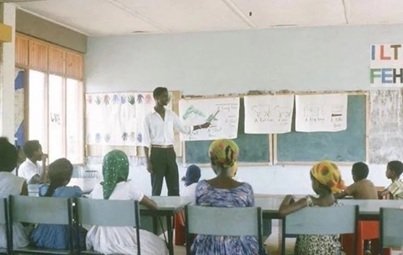By Mohamed A. Abdullahi
The Somali language, spoken by over 20 million people across the Horn of Africa and the diaspora, is far more than a tool for communication—it is a carrier of history, wisdom, and cultural identity. As a Cushitic language in the Afroasiatic family, Somali has long been preserved through oral tradition, making it one of the richest examples of an oral society in the modern world.
For centuries, Somali culture thrived without a written script. Instead, knowledge and values were passed down through poetry, proverbs, and storytelling. This oral foundation not only kept the language alive but elevated its speakers to become what many call a “nation of poets.” Poetry, particularly in the form of gabay, served as the highest expression of thought—used for everything from political debate to personal reflection encompassing beliefs, emotion, relationships and other various domains of life. Meanwhile, women contributed their voices through buraanbur, poetic verses performed at weddings and community gatherings that emphasized social wisdom, beauty, and resilience.
Somali proverbs are another enduring feature of this oral legacy. Phrases like “Af jooga looma adeego” (A present mouth does not get served in its absence) underscore the importance of speaking up, while “Nin Geed ka hadla, Geed ka deg” (He who speaks from the tree must also climb down from the tree) reminds listeners that words carry responsibility.
Folktales, too, reflect the moral and cultural codes of Somali society. Characters like Dhegdheer, the child-eating ogress, serve as cautionary figures, while stories about cunning animals reinforce values like cleverness and caution.
Despite its widespread use through oratory means, the Somali had no official written form until the 20th century. Various attempts to write it—including the Arabic script, Osmanya, Borama, and Kaddare—emerged, yet none were nationally adopted. That changed in 1972, when the Somali government under President Siad Barre declared Somali the official national language and introduced a Latin-based writing system. Chosen for its phonetic compatibility and simplicity, this decision was a turning point in Somali linguistic history – setting it apart from many other regional languages that often use non latin unique symbols and characters.
What followed was a massive literacy campaign across Somalia. Volunteers traveled to rural and urban areas to teach people how to read and write Somali in the new script. Government documents, newspapers, and school textbooks were all transitioned into Somali, creating a unified linguistic identity for the first time in the nation’s modern history.
Today, Somali faces significant challenges. Migration, urbanization, and civil unrest have weakened the intergenerational transmission of oral traditions. In many diaspora communities, English, Arabic, or other dominant languages are overtaking Somali, particularly among younger generations effectively diluting the language and creating hybrid local and Somali phrases and terms. Additionally, dialectal imbalances—especially the dominance of the northern Maxaa Tiri dialect over southern Maay—pose risks to linguistic diversity. Yet, there is hope. Somali oral traditions are adapting to new media. Social platforms now host spoken word performances and digital storytelling by young Somali creatives who are reclaiming their heritage in fresh ways. Community-led projects are documenting oral poetry, folktales, and proverbs, while Somali-language schools and cultural centers continue to promote literacy and pride in the language across many Somali centered hubs.
The Somali language is both a historical treasure and a living cultural force. Rooted in oral tradition and strengthened by its official recognition in 1972, it continues to carry the voice of a people who have long valued the power of words across generations, beginning with those trailblazers who sought to add another layer of preservation – to those actively holding onto the tradition and keep the flame alight.
Mohamed Abdiwahid Abdullahi
Email: AbdullahiM@tiffin.edu
—-
Mohamed is a writer and academic, holds a Master’s degree in Creative Writing
————-
Sources
Luling, Virginia. Somali Culture, History, and Social Institutions. In Somalia: Economy Without State, edited by Peter D. Little, Indiana University Press, 2003.
– Offers insights into Somali oral traditions, poetry, and social structures.
Andrzejewski, B.W., and Sheila Andrzejewski. An Anthology of Somali Poetry. Indiana University Press, 1993.
– A foundational text on Somali oral poetry, including gabay and buraanbur.
Saeed, John Ibrahim. Somali (Languages of the World). Routledge, 1999.
– A linguistic overview of the Somali language, including dialects and structure.
Laitin, David D. Politics, Language, and Thought: The Somali Experience. University of Chicago Press, 1977.
– An important political and sociolinguistic study of the Somali language, with a detailed account of the 1972 language reform.
Image Source:
“Classroom Scene in Somalia, Likely Mid-20th Century.” Reddit, uploaded by Reddit user, www.reddit.com, Accessed 15 Apr. 2025.


Leave a Reply